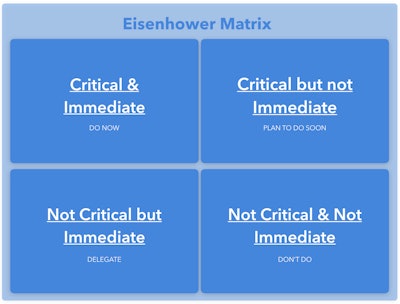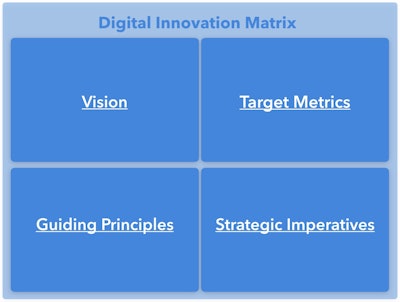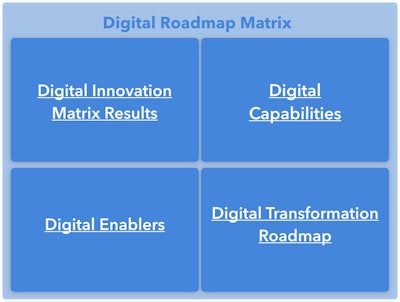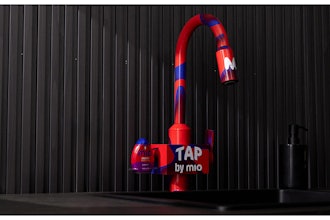
 Bella Fojut
Bella Fojut In its 2018 digital manufacturing report, McKinsey & Company notes the importance of agile execution:
“Manufacturing companies should drive execution of their Digital Manufacturing initiatives with an agile mindset across software and analytics. Beyond building the right external partnerships, they need to build the capability for internal collaboration across functions and break down organizational silos.”
This suggestion was made in response to new data making it clear that companies are too easily getting caught in what the report termed “pilot purgatory.”
This week, Stephen Engel, Senior Vice President at Hitachi Consulting, wrote an article titled “Six Key Factors That Make or Break a Manufacturer’s Digital Initiatives.” In it, he hinted at the need for leaders in manufacturing to learn more modern approaches to collaboration and project management:
“The traditional lecture-style monthly meetings and status reports don’t work in driving digital transformation. Instead, create an executive advisory board as a forum for education, and foster a roll-up-the-sleeves attitude about possibilities and approaches, taking care to ensure that all players are engaged as a team.”
As a first step in the digitization process, how can leaders in manufacturing prevent silos and the resulting misalignment? If monthly meetings and status reports are not the answer, what is? Below are some suggestions on how to update your update your project management practices among leadership:
Modernizing Project Management in Manufacturing
No. 1 - Evolve Past Email
Email was an incredible innovation and there is still a place for it in many areas. Yet, if executive teams are emailing back and forth around digital innovation, there might be a reason why progress is stalled. Find a tool that allows clearer and more responsive communication. Be aware however, that with the plethora of email alternatives, not all are actually an improvement. When searching for your new means of organizational communication, it helps to consider the reasons why the email program can hold you back:
- ‘Reply all’ and ‘forward’ is a messy way to loop colleagues into a critical conversation. Instead, a communication tool that provides clear context into what is important without causing message overload would be helpful
- Emails are tasks and projects in disguise. Because of this, you spent a lot of mental energy either remembering what task an email represents or translating it into a new tasks elsewhere. Look for a communication tool double as project management or integrates with a project management program, which brings us to the next point:
No. 2 - Physically collaborate on projects
Projects as critical digital transformation initiative require more than a spreadsheet to track status or a table created in PowerPoint. Project management tools today let you engage with each project as if it were a virtual landscape. This creates a space for teams to visualize and work on an initiative regardless of timezones, individual schedules and other responsibilities on each member’s plate.
No. 3 - Make team meeting the crowning glory of an already successful collaboration process
In the past, team meetings were seen as the most productive activity. However, as business has changed, continuing to speed up, the expectations for meetings have become unrealistic. At each meeting we try to review countless decisions and changes over the past few days or weeks in a limited amount of time. The intention is reminiscent of the proverbial task where one has to sort through a huge pile of different seeds. No sooner is the task (meeting) done, then the smallest gust of wind (or unforeseen change) mixes everything up again. While many meetings leave a team exhausted and even more confused, even if the meeting succeeds in re-clarifying and facilitating realignment, this optimal state is short lived.
No. 4 - Include your partners
Partnership are going to be a huge part of digital transformation projects. Thus, collaborating on a platform should not only include the organization’s leadership. Many project management systems nowadays recognize that membership in an organization is no longer such a black and white thing. Between organizations choices to employ hundreds of contractors each year and initiatives that include highly influential partners, it is expected that your project management tools can account for non-traditional collaborators.
No. 5 - Use the right frameworks to manage your projects
Project configuration is not longer a question of using number, letters or bullet points to best plot out what you are about to tackle as many project management platforms recognize. Organizational frameworks have been proven to facilitate better project visualization and more effective collaboration. The four quadrant project framework, for example, serves as a great support for critical initiative because of its ability to clearly encompass multiple characteristics and phases. The most famous four-quadrant framework is the Eisenhower Matrix, created by Dwight D. Eisenhower to visualize priority level and aid in faster decision making.

However, this 2x2 matrix can be customized to serve individual projects. For example, the Digital Innovation Matrix below helps an organization’s leadership define a clear, sustainable vision for digital transformation. Created from the belief that digital transformation, for the sake of transformation alone, is bound for failure, this framework helps leadership create the vision, thoroughly considering the options without getting stuck on this phase for two long.

The Digital Roadmap Matrix picks up where the Innovation Matrix leaves off, helping the team move from the vision to the roadmap:

Conclusion
While modern collaboration and project management practices like this are prevalent in other industries, it is not necessarily the case in manufacturing. If project visualization and management practices among executives at a manufacturing company have not significantly changed over the past fifteen years, there is one simply area that desperately requires transformation. However, with competition in the productivity and collaboration industry stronger than ever and examples to learn from in other industries, manufacturing executives can easily find the modern tools and practices to them on digital transformation at a larger scale.
Bella Fojut is a Customer Success Manager at Appfluence.























